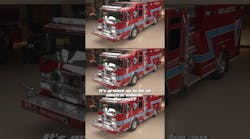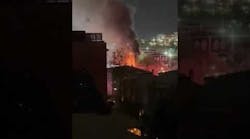Nov. 09--SAN ANDREAS -- It would take four to eight years for lumber mills in the region to process all the logs that could be salvaged from the 400-square-mile Rim Fire.
The problem is they'll only have about a year to do it.
It will be next summer by the time foresters will have been able to survey the burned timber stands and offer contracts that logging companies can bid on. By then the trees will have been dead for a year. Forestry experts say the deterioration caused by moisture and insects means that the lumber is only usable for about two years after a fire.
Frustrated by that slow pace of logging, Congressman Tom McClintock, R-Granite Bay, has sponsored legislation that would waive environmental review of salvage timber operations.
It passed the House but faces dim prospects in the Senate.
Yet, even if loggers had a full two years because they were allowed to simply enter burned forests and cut logs without any review, there isn't enough mill capacity in the region to process that many trees.
"You don't build a mill just for a slug of timber coming from one event," said Mark Pawlicki, spokesman for Sierra Pacific Industries, which owns two mills in Tuolumne County. "What the industry needs is a consistent supply over many years. You don't get that from a one-shot fire situation."
Foresters don't yet know exactly how much salvage lumber will come from the Rim Fire area. Stanislaus National Forest spokesman Jerry Snyder said rough estimates from foresters based on tours of the burned area are that it will be somewhere between 500 million and 1 billion board feet.
Pawlicki said the SPI mills at Standard and Chinese Camp can process about 125 million board feet a year.
In theory, the salvage logs could be trucked out of the region, to other SPI mills or mills operated by other companies. In practice, that adds to costs and may mean that a logging contract doesn't pencil out.
Federal forest managers are well aware that costs can kill interest in salvage logging contracts.
In the summer of 2012, the much smaller Ramsey Fire burned 1,137 acres in the Stanislaus National Forest south of Highway 4 in Calaveras County. This summer, foresters offered a salvage logging contract for 250 acres within the Ramsey Fire perimeter.
"And we did not receive any bids from any lumber company," Dave Horak, timber management officer for the Stanislaus National Forest, said.
Horak called logging firms to ask why they weren't interested. It turned out companies didn't want to log steep areas that would have required an expensive technique called "skyline yarding" for removing the trees.
Skyline yarding uses overhead cables to lift and move felled trees without dragging them along the ground. That prevents soil damage and erosion, but adds to costs.
Horak made the skyline yarding areas in the contract optional and put the bid out a second time. This time SPI offered a bid and it appears the contract will be consumated, Horak said.
Although some environmental groups criticize salvage logging as causing damage in forests, both federal and private forest managers say it can remove excess fuels and the value of commercial logs can help pay for work removing smaller-diameter trees that don't have commercial value.
"Anybody who has been to an area that has been burned and not harvested will see what happens," Pawlicki said. "Eventually you will get brush to come in and not tree seedlings."
Some environmental groups, including the Tuolumne-based Central Sierra Environmental Resource Center, do support the use of salvage logging to promote forest health and reduce the risk of extreme wildfires.
Stanislaus Forest officials say they are already taking measures to speed environmental review. Public meetings will start in December on that issue.
Stanislaus Forest officials also announced this week they will assemble a 55-person team to do the work of visiting burned areas and planning salvage contracts. About two-thirds of the workers on that team will come from elsewhere in the National Forest system, Snyder said.
"In this case, we are right against the timeline," Snyder said. "There is no additional time. We have to make sure our team is sharp and hits every step."
Contact reporter Dana M. Nichols at (209) 607-1361 or [email protected]. Visit his blog at www.recordnet.com/calaverasblog.
Copyright 2013 - The Record, Stockton, Calif.





